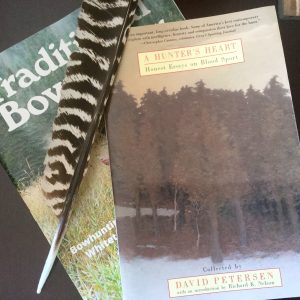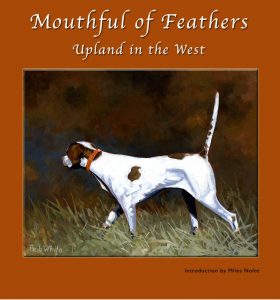
Upland bird hunting books are not rare. Ranging from how-to volumes to the more esoteric; from accounts of hunting everything a continent has to offer, to state, region or bird-specific exploits; from well-written, thought-provoking essays, to rather unassuming barstool tales. They are all fun to explore, if you are interested in upland bird hunting, but not all of them leave a mark. Some are destined to be consumed and forgotten, providing temporary distraction from the drudgeries of life. Others make you feel something, make you think, create impressions that linger. If you are open to it, “Mouthful of Feathers – Upland in the West” belongs to the the latter category.
If you are hoping to find a raucous read of the “I came, I saw, I killed a limit” kind, this is not your book. In fact, not too many birds get shot in the stories that comprise this volume. If you are after details about guns and gauges, you will also be disappointed, as I think there is only one story that specifically mentions a gauge, when talking about a lost childhood gun.
Eleven stories take you from a stormy rainy day in Alaska, to the desert border country of Arizona; from searching for the tiniest of quail to remembering days gone by hunting the biggest sage grouse. Tales of solitude and simple days on the plains (read the book to find out why I cannot say prairies anymore), with a bag limited in numbers, but limitless in memories. There is even mention of New England, but since this is a book about the West, the author is leaving it behind. In between the chapters, the editor placed annotated quotes, little gems that stand on their own, and reset the mind for the next story.
It’s hard to pick a favourite story, as they are quite diverse in nature. I recognized myself in a few of them, knowing I’d have chosen the same pursuit that day. Even though there was no attempt at making it sound glorious, or even slightly appealing, after reading one tale, all I wanted to do was load up the dog, get lost on a dirt track somewhere and waste time drinking beer, roasting wieners, think deep thoughts about my life and the past and future of our planet. Bird hunting optional. And I don’t even like wieners.
+++
This book was published as en e-book in 2013, and plans to go to print never materialized. I bought it through the Barnes& Noble website, in “Nook” format. For less than the price of a Double Tall Soy Latte with a Pump of Hazelnut you’ll buy yourself a few hours of dream time.
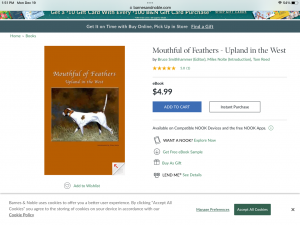
For easy reading on your tablet, you need the Barnes & Noble Nook app. Canadians beware: this app is not available for you. B&N will happily sell you the file access in Canada, but you’ll be stuck reading the online version, which I found awkward to navigate. Also, I don’t like to sit at my desk to read a book. After purchasing and realizing my predicament, I somehow managed to download the file, have my son convert it to Kindle format, and finagle it onto my brand new Kindle reader.
There was only one other drawback to this book: it was too short. The book itself provides the perfect quote: “Lunch was concluded with a foamy mouthful of Pilsner. It was just enough; not so much that I didn’t want another swallow. It’s nice to finish a beer wanting a bit more.” After reading this you’ll likely want just a bit more. Luckily, a print book has been announced with all new material for the summer of 2023. Available for pre-order now. I ordered mine. In the mean time, blog posts on the Mouthful of Feathers website by some of the same and other authors will have to fill the gap.
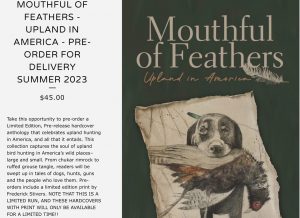
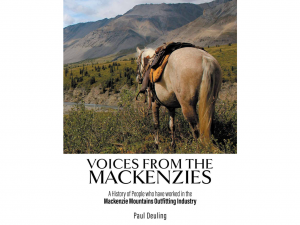 Arctic Red River, Gana River, Nahanni Butte, South Nahanni, Ram Head. Any sheephunter knows what we are talking about. NWT Outfitters, MacKenzie Mountains, Redstone River. Famous names, famous outfitters. Dall sheep, moose, caribou. The far North of the continent.
Arctic Red River, Gana River, Nahanni Butte, South Nahanni, Ram Head. Any sheephunter knows what we are talking about. NWT Outfitters, MacKenzie Mountains, Redstone River. Famous names, famous outfitters. Dall sheep, moose, caribou. The far North of the continent.